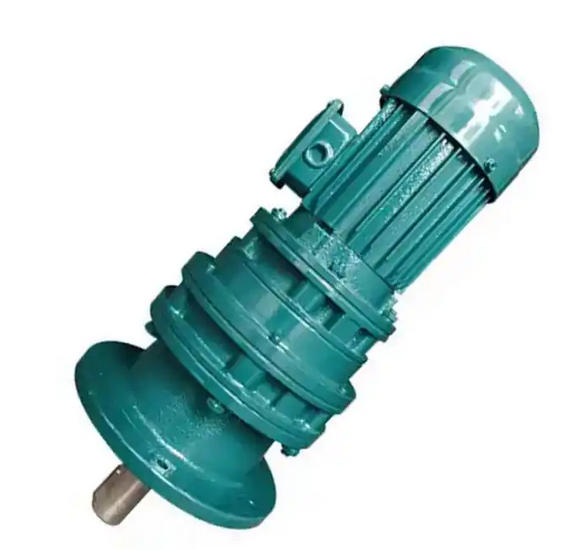What abnormal situations may occur during the actual load test of NGW111 planetary gearbox and their handling methods
The possible abnormal situations and handling methods during the actual load test of NGW111 planetary gearbox are as follows:Abnormal temperature rise:
Reason: It may be due to insufficient lubrication or deterioration, such as insufficient lubricating oil quantity, expired or incorrectly selected oil, lubricating oil contamination, etc; It may also be caused by overload operation, input power exceeding the rated value, or sudden load changes leading to instantaneous overload; It may also be due to bearing or gear wear, as well as poor heat dissipation, such as poor ventilation in the installation environment, or the surface of the gearbox being covered with debris.

Solution: Check the lubrication system, replenish lubricating oil or replace with appropriate lubricating oil; Verify input power and load parameters to avoid overload operation, optimize start and stop processes, and reduce impact loads; Disassemble and inspect bearings and gears, replace worn parts; Clean the heat dissipation channel to ensure good heat dissipation.
Abnormal noise or vibration:
Reason: gear wear, tooth surface pitting, tooth profile error, or installation eccentricity; Wear of bearing raceway or rollers, fracture of retaining frame; The motor and reducer shafts are not concentric; The anchor bolts, end cap screws, or output shaft locking nuts are loose.
Solution: Check the gear meshing status and replace worn gears if necessary; Check the bearings and replace damaged ones; Calibrate coaxiality to ensure that the motor and gearbox shafts are concentric; Tighten the anchor bolts, end cap screws, etc. to ensure a secure connection.
Oil leakage:
Reason: The flatness of the sealing surface exceeds the tolerance, or the O-ring is aging; The ventilation hole is blocked, and the internal pressure rises, causing oil to seep out from weak points; Excessive refueling, lubricating oil exceeding the oil level line, overflowing under the stirring of rotating components.
Solution: Replace aging seals; Clean the ventilation holes to ensure smooth ventilation; Check the oil level and adjust the lubricating oil level to the normal range.
Insufficient output torque:
Reason: Incorrect gear ratio selection, actual load torque exceeds the rated output torque of the gearbox; The input speed is too low, and the motor speed is insufficient, resulting in a decrease in output torque; Gear fracture, planetary gear detachment, or bearing jamming; Lubrication failure, poor lubrication leading to increased frictional resistance and decreased efficiency.
Solution: Select the appropriate reducer model based on the load torque and speed; Disassemble and inspect gears, planetary gears, and bearings, and replace damaged parts; Check the motor speed to ensure it is normal; Improve lubrication condition, replace lubricating oil or inspect lubrication system.
The planetary gear is stuck or not functioning properly:
Reason: The planetary gear bearings are damaged, such as the bearing cage breaking or the rollers getting stuck; Uneven force during installation can cause gear deformation, or long-term overload can lead to plastic deformation; Lubricating oil clumps and carbonizes in high-temperature environments, forming sludge that blocks the oil circuit.
Solution: Replace the damaged planetary gear bearings; Check the installation of gears and repair or replace deformed gears; Clean the oil circuit and replace the lubricating oil.


